Scots pine post
Nous vous proposons des pins sylvestres pour le milieu viticole, arboricole et les espaces verts
On this species, our range extends from untreated to class 3, 4, and 4SP, through autoclave treatment.
We can offer you different diameters and lengths; you can contact us for more information.
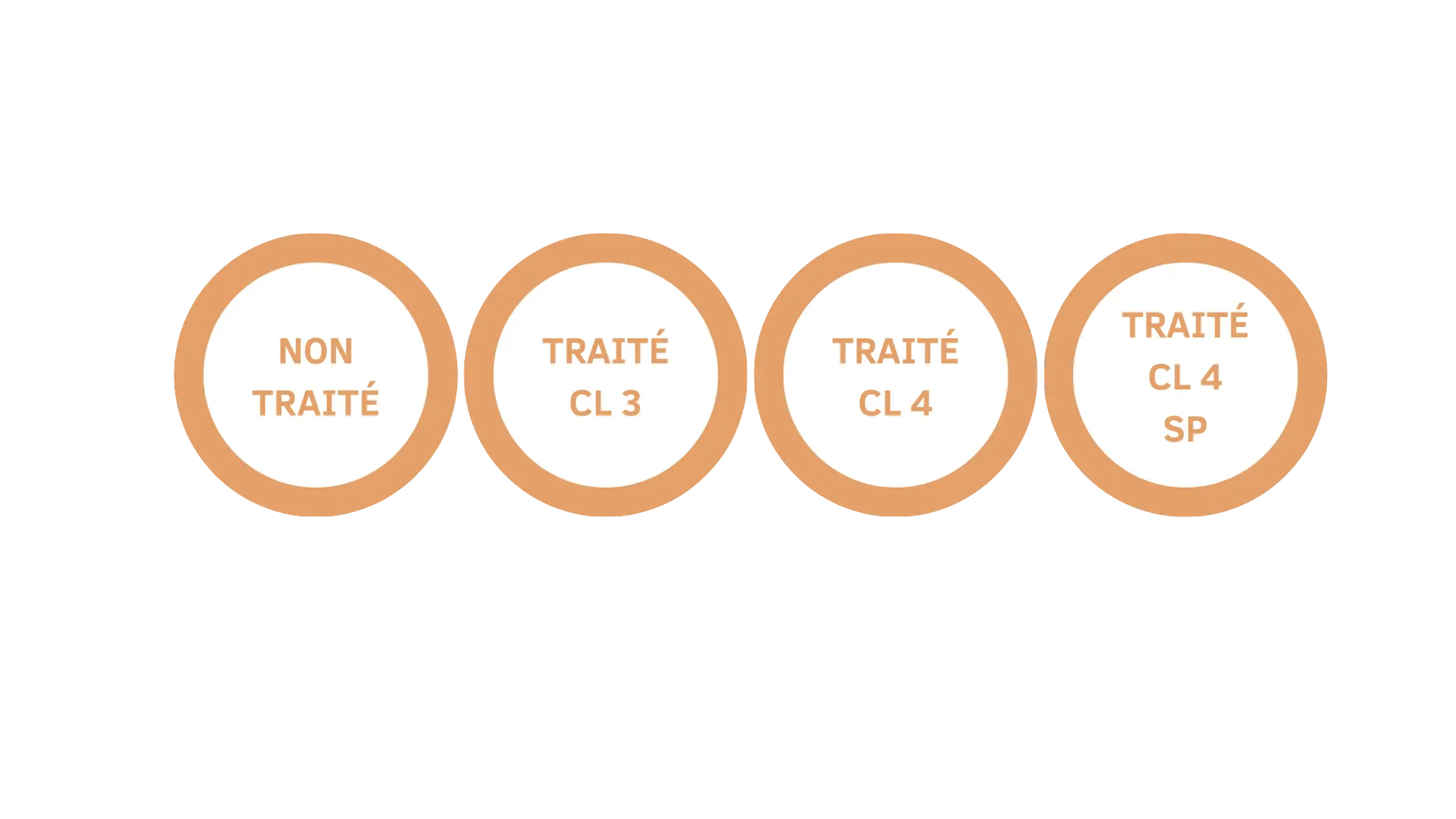
Les formats
Scots pine originating from Europe and available in several forms: planed or squared stakes, logs and half-logs, and stakes
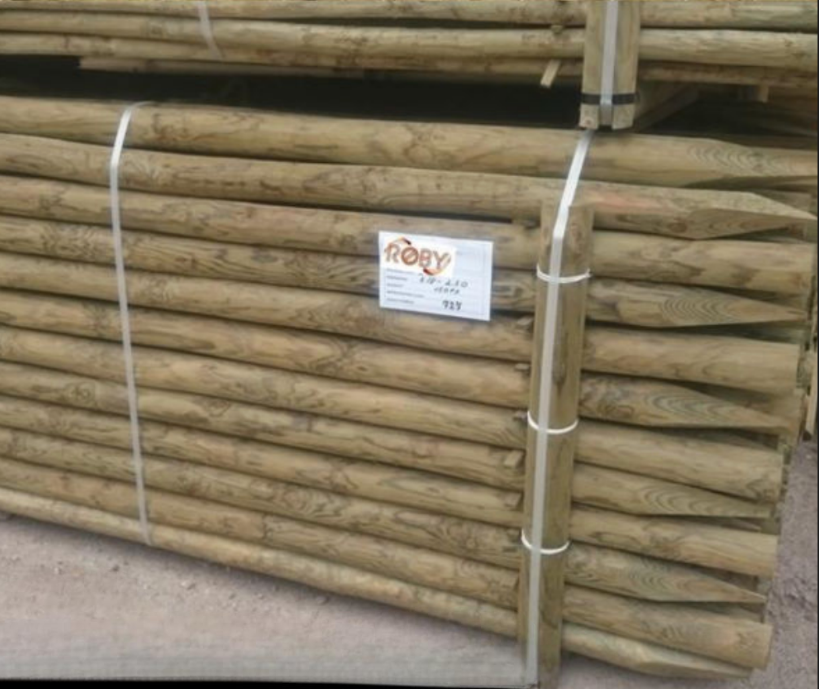
Viticulture
The choice of material for vineyard stakes is essential for the durability, cost-effectiveness, and reliability of trellis installations. Among the available wood species, Scots pine stands out as a high-performing solution. Treated to class 4 for increased resistance in the ground, it offers an excellent quality/price ratio. Its robustness allows for the maintenance of wires and vines over time. It is an economical choice without compromising on strength. Suitable for the constraints of the vineyard, it meets the requirements of professionals.
Viticulture
The choice of material for vineyard stakes is essential for the durability, profitability, and reliability of trellis installations. Among the available wood species, Scots pine stands out as a high-performing solution. Treated to class 4 for increased resistance in the ground, it offers an excellent quality/price ratio. Its robustness allows for the maintenance of wires and vines over time. It is an economical choice without compromising on strength. Suitable for the constraints of the vineyard, it meets the requirements of professionals.

Learn more
The advantages of vineyard stakes made from Scots pine
Treated wood class 4 for durability in ground contact
Le traitement autoclave classe 4 confère au piquet en pin sylvestre une résistance à l’humidité, aux champignons et aux insectes, garantissant une durabilité de 10 ans. Cela le rend idéal pour les conditions extérieures, offrant stabilité et fiabilité dans le palissage des vignes.
Economic alternative to more noble spirits
The Scots pine stake is an economical solution compared to species such as chestnut or acacia, while remaining functional and durable. Its lightness facilitates handling and installation, making it a cost-effective choice for large vineyard operations.
A proven solution
The Scots pine is a European resinous species valued for its mechanical properties, ease of processing, and controlled cost. It is widely used for the manufacture of vineyard stakes, providing strength and adaptability for vine training.
Economic solution
The Scots pine comes from responsibly managed European forests, making it an eco-friendly and sustainable option. The use of short supply chains and local processing helps to reduce the carbon footprint while ensuring a high-performing and environmentally friendly product.
Multiple uses in the vineyard
Le piquet en pin sylvestre est polyvalent, utilisé pour le palissage intermédiaire, les piquets de tête, de repère, ainsi que pour# soutenir des filets de protection et des signalétiques. Sa facilité de découpe et d’adaptation le rend adapté à diverses configurations dans les vignes.
The advantages of vineyard stakes made from Scots pine
Class 4 treated wood for durability in ground contact
The class 4 autoclave treatment gives the Scots pine post resistance to moisture, fungi, and insects, ensuring a durability of 10 to 15 years. This makes it ideal for outdoor conditions, providing stability and reliability in vine training.
Economic alternative to more noble spirits
The Scots pine stake is an economical solution compared to species such as chestnut or acacia, while remaining functional and durable. Its lightness facilitates handling and installation, making it a cost-effective choice for large vineyard operations.
A proven solution
The Scots pine is a European resinous species valued for its mechanical properties, ease of processing, and controlled cost. It is widely used for the manufacture of vineyard stakes, providing strength and adaptability for vine training.
Economic solution
The Scots pine comes from responsibly managed European forests, making it an eco-friendly and sustainable option. The use of short supply chains and local processing helps to reduce the carbon footprint while ensuring a high-performing and environmentally friendly product.
Multiple uses in the vineyard
The Scots pine stake is versatile, used for intermediate staking, head stakes, marker stakes, as well as for supporting protective nets and signage. Its ease of cutting and adaptation makes it suitable for various configurations in vineyards.
In conclusion
Choosing a vineyard stake made of Scots pine means opting for a robust wood, treated for durability, economical, and suited to the demands of the modern vineyard. Thanks to its technical qualities, its class 4 treatment, and its large-scale availability, it stands out as a benchmark solution for winemakers concerned about the quality of their training systems.
Whether you are a vineyard operator, an agricultural advisor, or a wine equipment installer, Scots pine is a reliable, durable, and consistent option for your vine stake needs.
In conclusion
Choosing a vineyard stake made of Scots pine means opting for a robust wood, treated for durability, economical, and suited to the demands of the modern vineyard. Thanks to its technical qualities, its class 4 treatment, and its large-scale availability, it stands out as a benchmark solution for winemakers concerned about the quality of their training systems.
Whether you are a vineyard operator, an agricultural advisor, or a wine equipment installer, Scots pine is a reliable, durable, and consistent option for your vine stake needs.
Do you have any further questions?
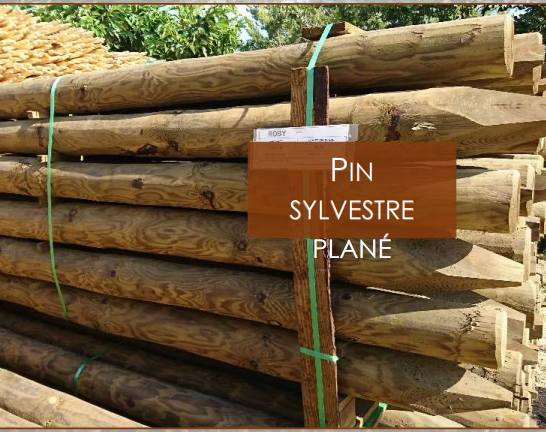
Arboriculture
For orchards, the quality of the stakes plays a major role in the longevity of the plantations. Scots pine, a European softwood, offers great resistance once treated to class 4. It allows for the support structures to be maintained over time, even in humid conditions. Its value for money makes it a strategic choice for fruit growers. Available in several formats, it adapts to the needs of each crop. Durable, economical, and reliable, it meets the technical requirements of the land.
Arboriculture
For orchards, the quality of the stakes plays a major role in the longevity of the plantations. Scots pine, a European softwood, offers great resistance once treated to class 4. It allows for the maintenance of support structures over time, even in humid conditions. Its value for money makes it a strategic choice for fruit growers. Available in several formats, it adapts to the needs of each crop. Durable, economical, and reliable, it meets the technical requirements of the land.
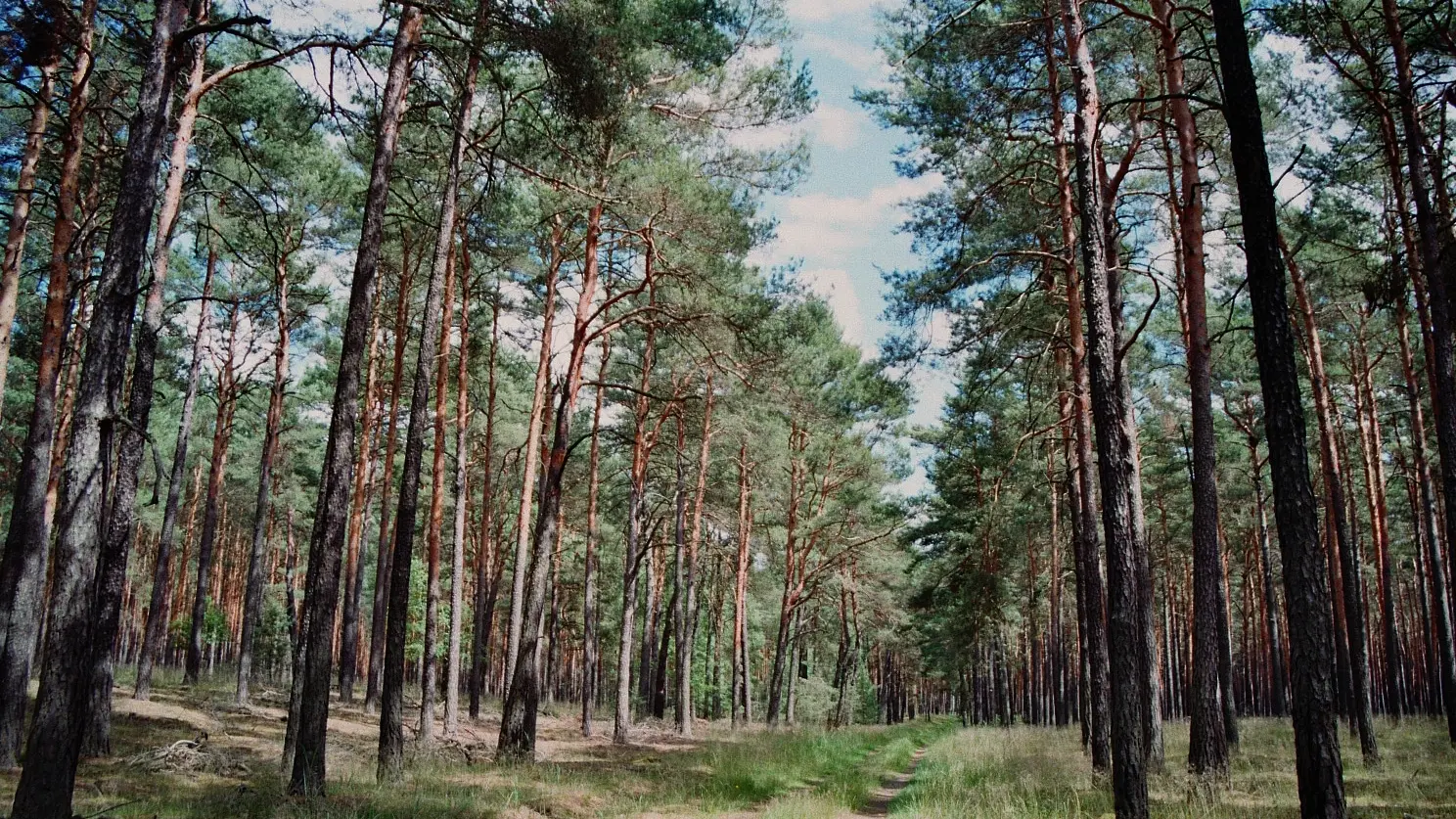
Learn more
The advantages of Scots pine in arboriculture
A reliable choice
The Scots pine stake is sturdy, lightweight, and easy to use for supporting fruit trees and marking out plots. It is particularly suitable for the planting of fruit trees and soft fruits, ensuring quality production through careful training.
Cost-effective and efficient solution
The treated Scots pine post is more affordable than other species such as chestnut or acacia, while offering optimal durability. Its availability in large quantities makes it an ideal solution for medium to large-sized operations.
Optimal durability outdoors
Traitée autoclave classe 4, l’essence de pin sylvestre est résistante à l’humidité, aux champignons, aux insectes et à la décomposition, garantissant une longévité de 10 ans, même en conditions climatiques difficiles. Un investissement durable pour les arboriculteurs.
A sustainable and eco-friendly fuel
The Scots pine is a local and sustainable resource, often sourced from responsibly managed European forests. Class 4 treatment complies with environmental standards, ensuring safe use for soils and crops, while supporting the forestry economy.
Multiple uses in modern arboriculture
The Scots pine stake is used to support young trees, train fruit trees, hold protective nets, delineate cultivation areas, and serve as markers in orchards. It is easy to adapt for different training systems.
The advantages of Scots pine in arboriculture
A reliable choice
The Scots pine stake is sturdy, lightweight, and easy to use for supporting fruit trees and marking out plots. It is particularly suitable for the planting of fruit trees and soft fruits, ensuring quality production through careful training.
Cost-effective and efficient solution
The treated Scots pine post is more affordable than other species such as chestnut or acacia, while offering optimal durability. Its availability in large quantities makes it an ideal solution for medium to large-sized operations.
Optimal durability outdoors
Class 4 autoclave treated, Scots pine wood is resistant to moisture, fungi, insects, and decay, ensuring a lifespan of 10 to 15 years, even in harsh climatic conditions. A sustainable investment for tree growers.
A sustainable and eco-friendly fuel
The Scots pine is a local and sustainable resource, often sourced from responsibly managed European forests. Class 4 treatment complies with environmental standards, ensuring safe use for soils and crops, while supporting the forestry economy.
Multiple uses in modern arboriculture
The Scots pine stake is used to support young trees, train fruit trees, hold protective nets, delineate cultivation areas, and serve as markers in orchards. It is easy to adapt for different training systems.
In conclusion
The Scots pine is an ideal solution for the manufacture of tree stakes, thanks to its mechanical properties, durability once treated, ease of use, and cost-effectiveness. It perfectly meets the needs of modern fruit growers who are looking for a material that is strong, eco-friendly, and suitable for the demands of the terrain.
Whether you are installing a new orchard, modernising an existing farm, or replacing your support stakes, the treated class 4 Scots pine stake is a safe, durable, and cost-effective solution.
Une question sur nos produits ou leur utilisation ?
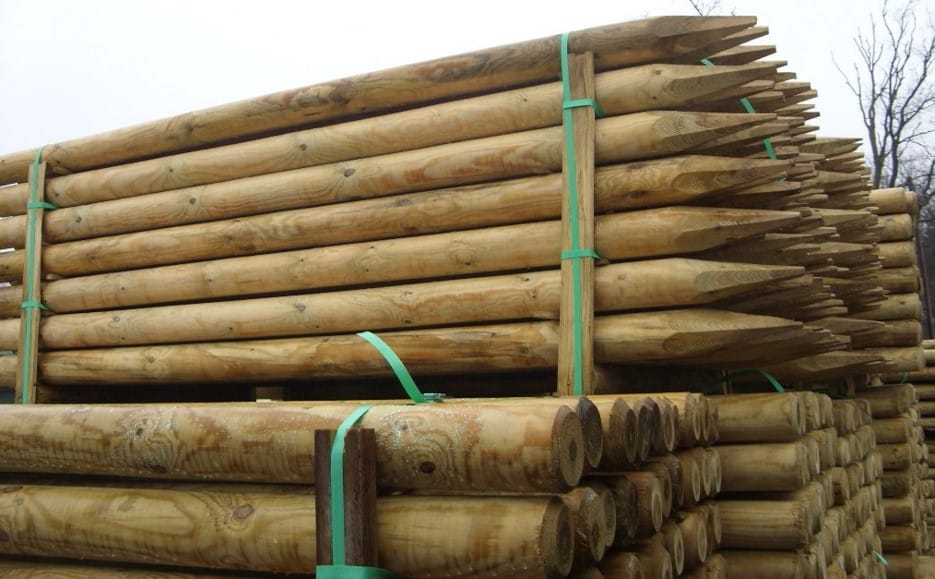
Espaces verts
Le choix du piquet est essentiel pour garantir la stabilité et la longévité des aménagements paysagers. Utilisé dans les espaces verts, le pin sylvestre s’impose comme une essence fiable et performante. Résistant aux contraintes extérieures, il structure les plantations, soutient les jeunes arbres et délimite les zones. Sa solidité assure un ancrage durable, même en conditions difficiles. Facile à manipuler et disponible en plusieurs dimensions, c’est une solution efficace et adaptée aux besoins des professionnels du paysage.
Espaces verts
Le choix du piquet est essentiel pour garantir la stabilité et la longévité des aménagements paysagers. Utilisé dans les espaces verts, le pin sylvestre s’impose comme une essence fiable et performante. Résistant aux contraintes extérieures, il structure les plantations, soutient les jeunes arbres et délimite les zones. Sa solidité assure un ancrage durable, même en conditions difficiles. Facile à manipuler et disponible en plusieurs dimensions, c’est une solution efficace et adaptée aux besoins des professionnels du paysage.

Learn more
Espaces verts : les atouts du pin sylvestre
Soutien des jeunes plantations
Le piquet en pin sylvestre permet de maintenir les jeunes arbres droits lors de leur croissance. Léger, maniable et robuste, il facilite le travail des paysagistes dans les parcs, jardins ou zones de reboisement.
Résistance adaptée à l’extérieur
Le pin sylvestre présente une bonne résistance aux conditions extérieures. Il supporte l’humidité, les variations climatiques et le contact prolongé avec le sol, garantissant une tenue durable pour tous les aménagements en plein air.
Délimitation naturelle des espaces
Utilisé comme piquet d’alignement ou de balisage, le pin sylvestre permet de structurer les espaces verts. Il est idéal pour créer des bordures, délimiter des massifs ou sécuriser des zones sensibles.
Solution économique et durable
Disponible en grandes quantités, le pin sylvestre répond efficacement aux besoins des professionnels de l’aménagement paysager. Sa durabilité et sa facilité de mise en œuvre en font un choix adapté aux projets de moyenne à grande échelle.
Esthétique et intégration paysagère
Avec son aspect rustique, brut ou écorcé, le piquet en pin sylvestre s’intègre parfaitement dans les environnements naturels. Il valorise les aménagements tout en conservant une harmonie visuelle avec le végétal.
Espaces verts : les atouts du pin sylvestre
Soutien des jeunes plantations
Le piquet en pin sylvestre permet de maintenir les jeunes arbres droits lors de leur croissance. Léger, maniable et robuste, il facilite le travail des paysagistes dans les parcs, jardins ou zones de reboisement.
Résistance adaptée à l’extérieur
Le pin sylvestre présente une bonne résistance aux conditions extérieures. Il supporte l’humidité, les variations climatiques et le contact prolongé avec le sol, garantissant une tenue durable pour tous les aménagements en plein air.
Délimitation naturelle des espaces
Utilisé comme piquet d’alignement ou de balisage, le pin sylvestre permet de structurer les espaces verts. Il est idéal pour créer des bordures, délimiter des massifs ou sécuriser des zones sensibles.
Solution économique et durable
Disponible en grandes quantités, le pin sylvestre répond efficacement aux besoins des professionnels de l’aménagement paysager. Sa durabilité et sa facilité de mise en œuvre en font un choix adapté aux projets de moyenne à grande échelle.
Esthétique et intégration paysagère
Avec son aspect rustique, brut ou écorcé, le piquet en pin sylvestre s’intègre parfaitement dans les environnements naturels. Il valorise les aménagements tout en conservant une harmonie visuelle avec le végétal.
In conclusion
Le pin sylvestre est une solution idéale pour les aménagements paysagers, notamment pour la fabrication de piquets et tuteurs. Ses qualités mécaniques, sa résistance en extérieur, sa simplicité de mise en œuvre et sa disponibilité en font un choix pertinent pour les professionnels des espaces verts.
Que vous réalisiez un nouvel aménagement, consolidiez des plantations existantes ou sécurisiez des zones naturelles, le piquet en pin sylvestre est une option fiable, durable et parfaitement adaptée aux exigences des chantiers paysagers.
In conclusion
Le pin sylvestre est une solution idéale pour les aménagements paysagers, notamment pour la fabrication de piquets et tuteurs. Ses qualités mécaniques, sa résistance en extérieur, sa simplicité de mise en œuvre et sa disponibilité en font un choix pertinent pour les professionnels des espaces verts.
Que vous réalisiez un nouvel aménagement, consolidiez des plantations existantes ou sécurisiez des zones naturelles, le piquet en pin sylvestre est une option fiable, durable et parfaitement adaptée aux exigences des chantiers paysagers.

